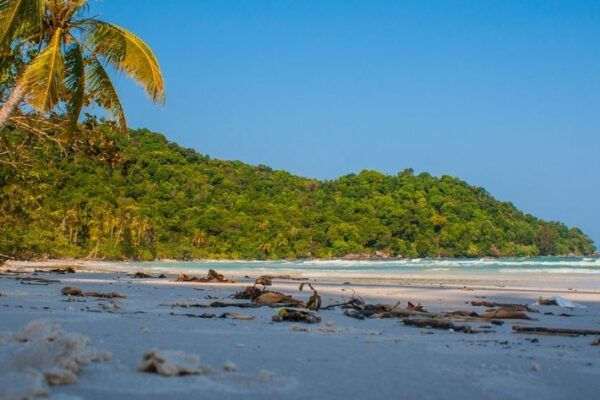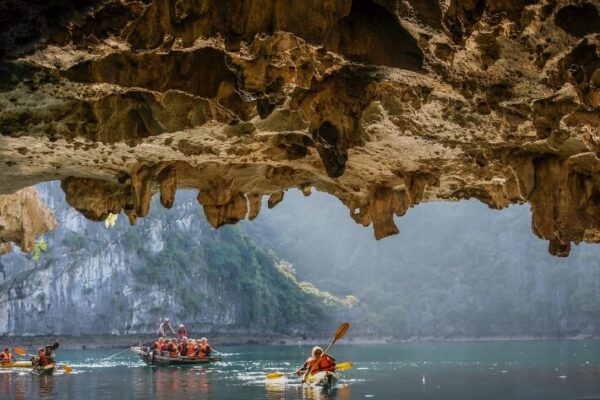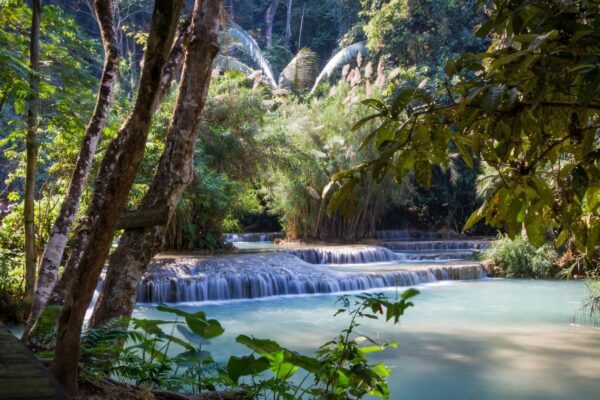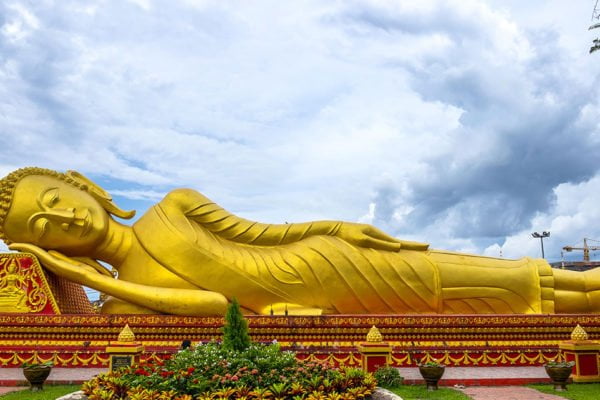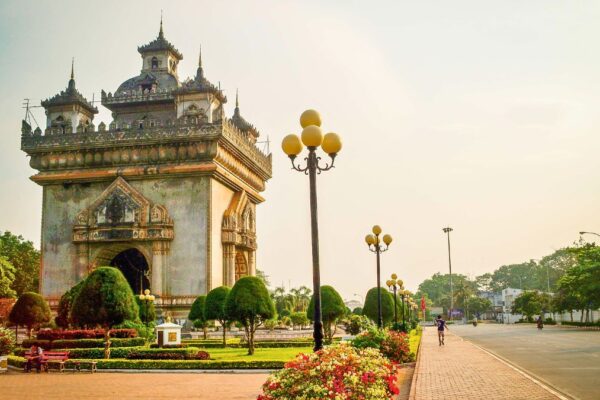What Is Laos Famous For: Iconic Sights and Experiences You Can’t Miss
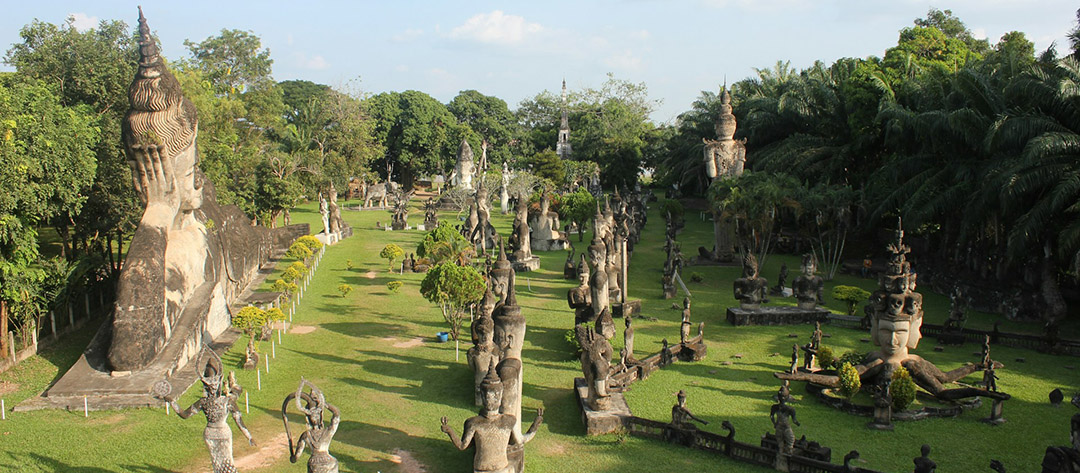
When you picture Southeast Asia, you might think of bustling cities or sprawling coastlines. But what is Laos famous for?
Tucked away as the region’s only landlocked country, Laos offers something more profound: a journey into a land defined by its serene culture, untamed nature, and enduring mysteries. This is a nation that moves at the pace of the Mekong River, where ancient traditions are not relics in a museum but are practiced daily, and where the landscape holds secrets centuries old.
What Cultural Aspects Of Laos Are Beyond the Temples
While the gilded temples of Luang Prabang are magnificent, the country’s real cultural heartbeat is found in the daily rituals, masterful crafts, and joyful celebrations of its people. This is where you connect with the true spirit of Laos, a spirit of gentle hospitality, deep-rooted spirituality, and immense artistic pride. It’s a culture that unfolds not in grand monuments, but in the quiet, meaningful interactions of everyday life.
Traditional Crafts

The artistic traditions of Laos are a vibrant thread connecting the past to the present. The rhythmic clack of a loom is a common sound in many villages, a testament to the enduring art of silk weaving. The process is painstakingly beautiful, from nurturing silkworms on mulberry leaves to dyeing the threads with natural materials like indigo, turmeric, and tamarind. Each region boasts its own distinct patterns and motifs, often seen in the traditional tube-skirt, the sin. Villages like Ban Xang Khong near Luang Prabang are renowned for their master weavers.
Equally impressive is the intricate wood carving that adorns temple doors, window frames, and religious effigies. Using teak and rosewood, artisans carve mythological figures like the Naga (a mythical water serpent) and scenes from the Ramayana, transforming wood into profound stories. Beyond these, the country is also known for its meticulous silverwork, particularly in Luang Prabang, and the creation of rustic, functional pottery in villages along the Mekong.
Apsara and Lao folk dances
The performing arts tell the story of the nation. The classical Apsara dance, with its origins in the royal courts, is a display of sublime grace and control. Each delicate hand gesture, or mudra, carries a specific meaning, telling stories of gods and legends.
While less formal, the various Lao folk dances are no less significant. The most famous is the Lam Vong, a slow and elegant circle dance where couples move in harmony. It’s a social staple at weddings, festivals, and celebrations, a beautiful expression of community and courtship. These dances are almost always accompanied by the distinctive sounds of traditional Lao music, with the khaen, a handcrafted bamboo mouth organ, providing a hauntingly beautiful and uniquely Lao melody.
Religious rituals & Monk blessings
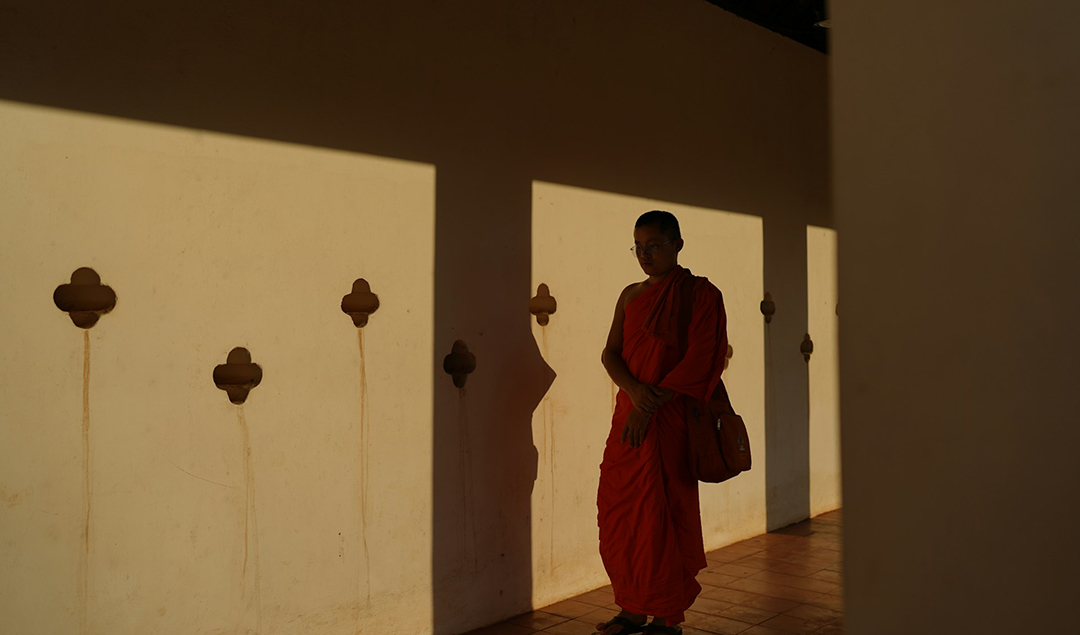
Spirituality is woven into the fabric of daily life. The most iconic ritual is the pre-dawn alms-giving ceremony (tak bat), which begins around 05:30 in Luang Prabang. Here, hundreds of saffron-robed monks walk silently in single file to receive offerings of sticky rice from devout locals. For visitors, it’s a deeply moving spectacle, but one that requires utmost respect—dress modestly, maintain a quiet distance, and never use a camera flash.
For a more personal experience, participating in a Baci ceremony is a must. This ancient animist tradition, now blended with Buddhist beliefs, is performed to celebrate major life events or to wish travelers well. A village elder will chant blessings while tying white cotton strings around your wrist to bestow luck, health, and protection, a powerful and intimate connection to Lao spiritual life.
That Luang Festival & Pi Mai Lao (New Year)

Time your visit right, and you’ll see Laos at its most vibrant. The That Luang Festival, held in Vientiane on the full moon of the twelfth lunar month, is the nation’s most important religious celebration. The golden stupa of That Luang becomes the center of a week-long festival featuring candlelit processions, traditional music, and a huge fair.
In mid-April, the entire country erupts in celebration for Pi Mai Lao (Lao New Year). While it involves boisterous water-throwing similar to Thailand’s Songkran, the Lao festival has its own unique charms. Families gather to have their elders bless them with water, Buddha images are gently washed with scented water in temples, and communities build decorative sand stupas on the riverbanks.
For a different kind of excitement, the Boun Bang Fai (Rocket Festival), held just before the rainy season, sees villages compete to launch enormous homemade bamboo rockets into the sky in a lively and sometimes chaotic plea for rain.
>> Read More: 7 Enchanting Laos Festivals and The Best Way to Experience Them Like a Local
Local markets & Food experiences
To understand Laos, you must taste it.
The national dish, laap (a spicy minced meat or fish salad), is a vibrant explosion of mint, chili, lime juice, and toasted ground rice (khao khoua), which gives it a unique nutty texture.
Every meal is anchored by khao niao (sticky rice ), which is kneaded into a small ball with the fingers and used to scoop up other dishes. It’s more than just a staple; it’s a symbol of Lao identity.
Don’t miss tam mak hoong (spicy green papaya salad), which is often funkier and fiercer than its Thai counterpart, or Or Lam, a rich and peppery stew from Luang Prabang. The culinary journey continues in the morning markets, where you can find an incredible array of fresh produce, river fish, and local snacks.
Finally, don’t leave without trying the surprisingly robust coffee from the Bolaven Plateau, a region whose cool climate produces world-class beans. Enjoy it Lao-style—strong and sweet with condensed milk—at a riverside café.
Laos in Nature: The Land of Water and Green
Its lack of a coastline is its greatest strength, forcing life to revolve around the mighty Mekong River and the thousands of streams that carve through its jungle-clad mountains. This is raw, powerful, and accessible nature, a world away from the crowded beaches of its neighbors. The landscape is a character in the story of Laos, shaping its culture, its economy, and the daily lives of its people.
Marvelous Waterfalls
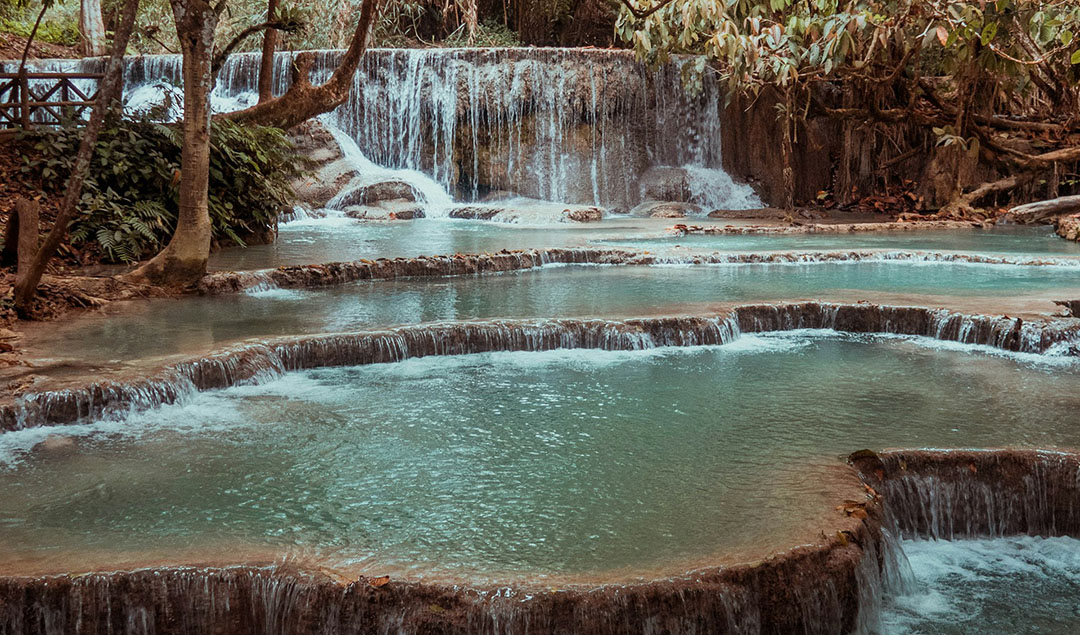
Laos is famous for some of the most spectacular waterfalls in the region.
Kuang Si Falls near Luang Prabang is a multi-tiered masterpiece of cascading turquoise pools that tumble through the jungle. The limestone-rich water creates a stunning azure hue, and the inviting pools are perfect for a refreshing swim. You can hike to the top for a rewarding view and visit the Tat Kuang Si Bear Rescue Centre at the entrance.
Further south, the Bolaven Plateau, a fertile highland known for its coffee plantations, is home to a series of epic waterfalls. The most dramatic are the thundering twin cascades of Tad Fane, which plunge over 120 meters into a deep gorge. Nearby, Tad Yuang offers a more accessible and equally beautiful spot for a picnic and swim.
In the 4,000 Islands, the Khone Phapheng Falls are the largest by volume in Southeast Asia, a roaring spectacle that showcases the raw power of the Mekong.
Mekong River Journeys
The Mekong River isn’t just a border; it’s the country’s main highway and life source. The classic Lao experience is taking the two-day slow boat journey from Huay Xai to Luang Prabang. This is not about speed but about immersion.
As the long, wooden boat chugs downstream, you’ll witness a panorama of riverside life: children playing in the water, fishermen casting their nets, water buffalo bathing in the shallows, and remote villages appearing through the mist. The journey includes an overnight stop in the small town of Pakbeng, breaking the trip into two relaxing days of observation.
For those seeking more comfort, luxury cruises offer the same stunning scenery with plusher amenities. In Luang Prabang and Vientiane, sunset cruises provide a perfect, tranquil end to the day, watching the sun dip below the river horizon.
Vang Vieng’s Karsts and Caves:
Once a notorious party town, Vang Vieng has been reborn as one of Southeast Asia’s premier eco-adventure hubs. Its defining features are the dramatic limestone karsts that jut out of emerald-green rice paddies like ancient, sleeping giants.
The Nam Song River flows serenely between them, offering perfect opportunities for kayaking, tubing, or taking a long-tail boat ride. The karsts are riddled with caves, each with its own character.
Tham Chang is one of the most accessible, offering a stunning viewpoint over the valley from its entrance. The most famous is Tham Phu Kham, a sacred cave that houses a reclining bronze Buddha, which sits just above the famous Blue Lagoon, a crystal-clear spring-fed pool that is an idyllic spot for a swim.
For the more adventurous, rock climbing and zip-lining offer thrilling ways to experience the vertical landscape.
4,000 Islands (Si Phan Don)
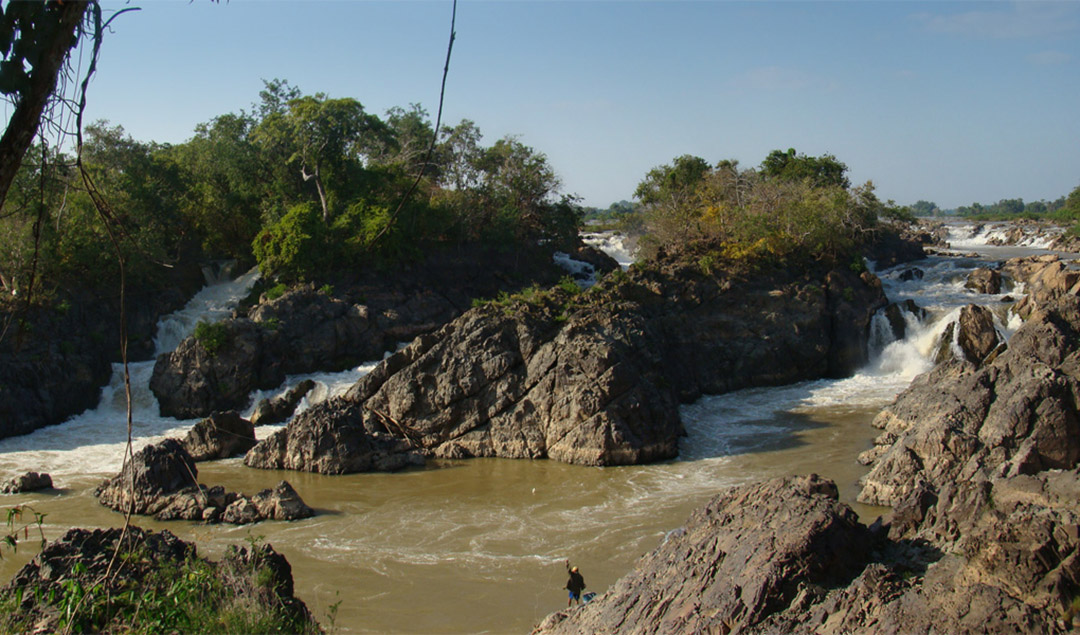
Where the Mekong River widens before crashing into Cambodia, it creates a unique riverine archipelago of thousands of islets, sandbars, and islands. This laid-back paradise is the ultimate place to unwind.
The main islands each have a distinct personality: Don Det is the hub for backpackers with its guesthouses and riverside bars; Don Khon is quieter, connected by a historic French-built bridge, and offers glimpses of an old locomotive and colonial-era ruins; Don Kong is the largest and most tranquil, perfect for experiencing local village life.
The main activity here is inactivity: rent a bicycle and leisurely pedal through rice paddies, nap in a hammock with a book, and savor fresh grilled fish from the Mekong. It’s also one of the last places on earth to spot the rare and endangered Irrawaddy dolphin, best seen on a quiet boat trip near the Cambodian border.
Jungle Trekking & Eco-lodges
Laos is a quiet leader in community-based ecotourism. In the north, Luang Namtha is the gateway to the Nam Ha National Protected Area, a vast wilderness of mountains and jungle.
Here, you can embark on multi-day treks that are more than just a hike; they’re a deep cultural immersion. Led by local guides, you’ll spend an overnight stay in the remote villages of the Khmu or Lanten ethnic groups, sharing meals and learning about their sustainable way of life.
Another pioneering project is the Gibbon Experience in the Bokeo Nature Reserve, where visitors stay in the world’s tallest treehouses and traverse the forest canopy on a network of zip-lines, contributing to conservation and providing local employment. These projects offer a model for responsible travel, where your adventure directly supports the protection of Laos’s incredible biodiversity.
>> See Tour: Laos In Depth
Mystery with The Hidden Side
Beyond the culture and nature lies a more enigmatic side of Laos. It’s a country renowned for its unsolved puzzles, hidden corners, and its unique ability to make you feel like a true explorer discovering something for the first time. These are the places that fire the imagination and leave you with more questions than answers, a testament to Laos’s ancient and often turbulent history.
Plain of Jars
This is Laos’s greatest archaeological puzzle. Scattered across the Xieng Khouang plateau are thousands of giant, ancient stone jars, some standing over three meters tall and weighing several tons. Who carved them, and why?
The main theory suggests they were part of complex burial rituals from the Iron Age, a belief supported by the discovery of human remains and grave goods nearby. Local legends, however, tell of a race of giants who used the jars to brew and store rice wine.
Visiting the three main accessible sites, you can ponder the mystery for yourself. The area also carries the somber scars of the Secret War of the 1960s and 70s, making it one of the most heavily bombed regions per capita in history. The presence of unexploded ordnance (UXO) means you must stick to clearly marked paths, adding a layer of poignant history to the ancient mystery.
Kong Lor Cave
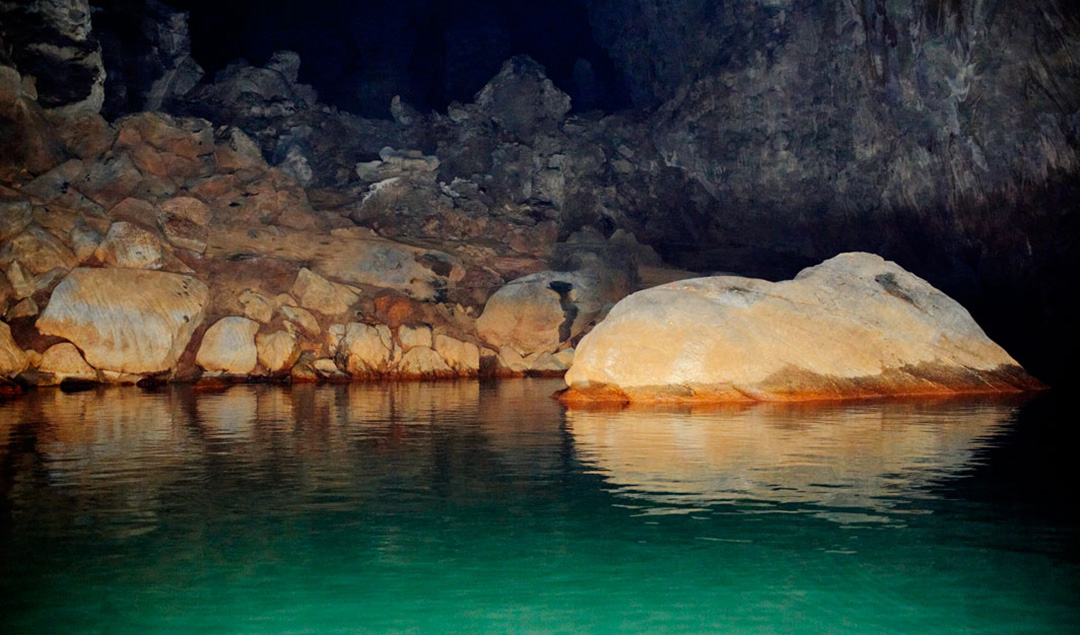
Prepare for one of Southeast Asia’s most thrilling and surreal adventures. In the remote Phou Hin Poun National Protected Area, the Nam Hinboun River disappears into the base of a mountain. You follow it. Aboard a small, motorized canoe, you will travel 7.5 kilometres in near-total darkness through the heart of a limestone mountain.
The journey is a sensory experience: the sound of the engine echoing off cavern walls, the cool air, and the occasional glimpse of massive rock formations in the beam of your guide’s headlamp. About halfway through, the boat stops at a “geological wonderland,” a section of the cave illuminated with electric lights, revealing breathtaking stalactites and stalagmites. This is not just a tourist attraction; for local villagers, it’s a vital transport link, making the journey an authentic and unforgettable experience.
Remote Hill Tribe Villages & Ethnic Diversity
Laos is one of the most ethnically diverse countries in the region, with nearly 50 distinct groups, each with its own language, dress, and traditions.
Trekking into the northern provinces of Phongsali or Luang Namtha offers a chance for authentic and respectful cultural exchange. You might encounter the Hmong, known for their resilient spirit and their intricate “flower cloth” embroidery; the Akha, whose women wear elaborate headdresses adorned with silver coins; or the Khmu, the original inhabitants of northern Laos, who are masters of basket weaving and have a deep knowledge of the forest.
Responsible tourism is key here: always go with a local guide, support communities by buying handicrafts directly from the artisans, and always ask permission before taking photographs. This is a chance to glimpse a way of life that has remained unchanged for centuries.
Offbeat Temple Ruins
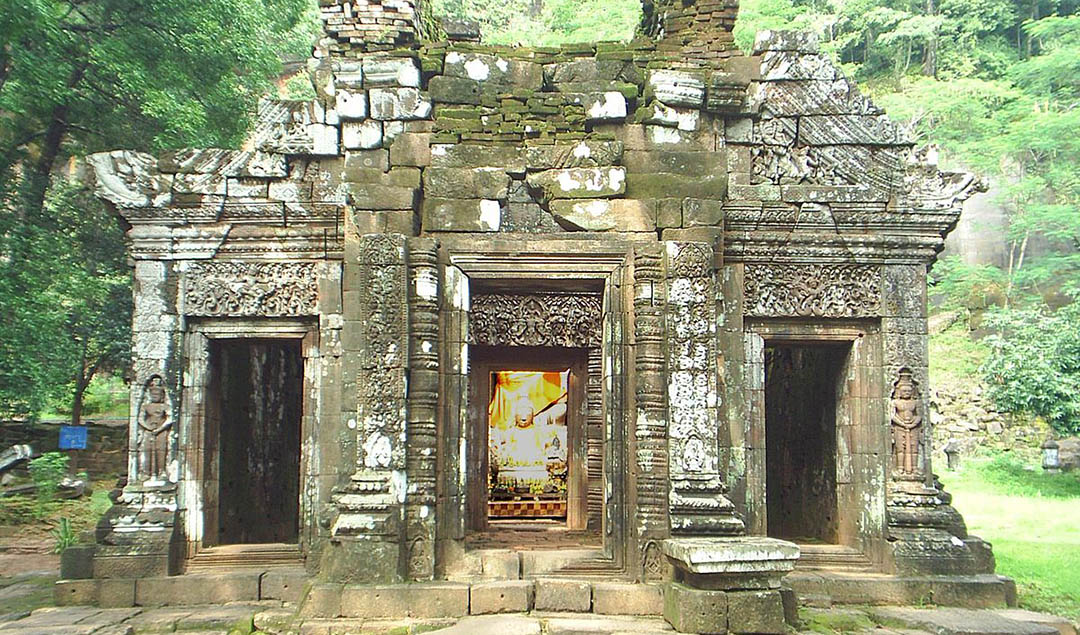
While Luang Prabang’s temples are perfectly preserved, southern Laos holds the atmospheric ruins of Wat Phou. This pre-Angkorian Khmer temple complex, a UNESCO World Heritage Site, is beautifully set on a hillside overlooking the Mekong plains.
As you walk the ancient causeway, past two grand palaces, and climb the steep stone staircase to the main sanctuary, you can feel the site’s immense history. The sanctuary itself houses a sacred spring, and the lintels feature some of the finest carvings in the Khmer style. It offers a much more intimate and contemplative experience than its famous cousin, Angkor Wat.
For those truly seeking the path less traveled, the mysterious ruins of Muang Soune, an ancient city near Luang Prabang with enigmatic standing stones, offer another puzzle to solve.
Untouched Natural Parks
Vast swathes of Laos remain undeveloped, wild, and largely unexplored by tourists.
Nakai-Nam Theun, located in the Annamite Mountains, are frontiers of biodiversity. This rugged wilderness is home to an incredible array of species, including rare mammals like the saola (often called the “Asian unicorn”) and several species of langur. Conservation efforts are underway to protect this critical habitat.
The Phou Hin Poun National Protected Area, where Kong Lor Cave is found, is another vast expanse of stunning karst landscapes and dense forest. Exploring these areas offers a glimpse into what much of Southeast Asia looked like before development, a chance to experience raw, untamed nature in its purest form.
This is the ultimate destination for those truly wanting to get off the beaten path and witness the wild heart of Laos.
Final Words
Laos is a treasure trove of vibrant culture, stunning natural landscapes, and captivating mysteries that spark the imagination! Experience this extraordinary country with the local experts at Asia Travel Pioneer. We are ready to craft your perfect adventure in Southeast Asia. Our travel designers wholeheartedly encourage you to travel at a leisurely pace—by embracing the serene rhythm of Laos, you’ll discover a destination that deeply resonates with your spirit. Let’s embark on this unforgettable journey together!

